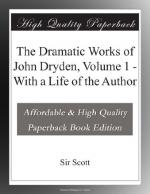|
This section contains 2,182 words (approx. 8 pages at 300 words per page) |

|
SOURCE: "The Musical Structure of Dryden's Song for St. Cecilia's Day," in Eighteenth-Century Studies, Vol. 10, No. 3, Spring 1977, pp. 326-34.
In the following excerpt, Murray uses seventeenth-century music theory to demonstrate how the stanzas in Dryden's Song for St. Cecilia's Day, 1687, conform to classical music modes in order to produce such emotional effects as love, patriotism, and mourning.
No one questions that the Song for St. Cecilia's Day, 1687 is a well-structured lyric, but Dryden's critics have reached no consensus on exactly why its internal stanzas are arranged as they are. Alastair Fowler and Douglas Brooks have suggested that stanzas iii-vi depict the four humors—"choleric, melancholic, phlegmatic, and sanguine." Jay Arnold Levine argues that these same four stanzas represent both the four primeval elements from which God created the cosmos and the traditional four parts "of full instrumental music." Earl Miner posits that the whole poem falls into a...
|
This section contains 2,182 words (approx. 8 pages at 300 words per page) |

|


